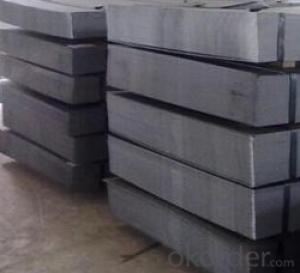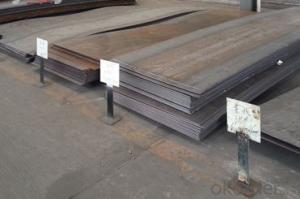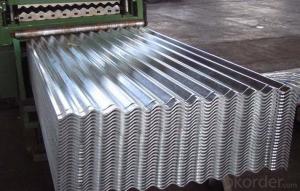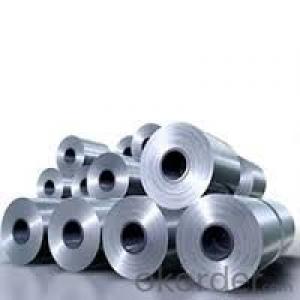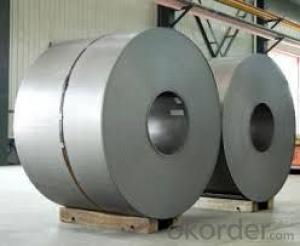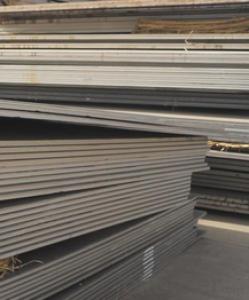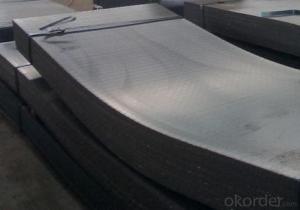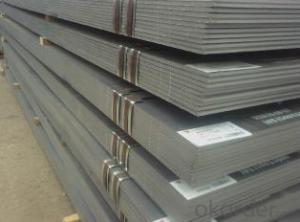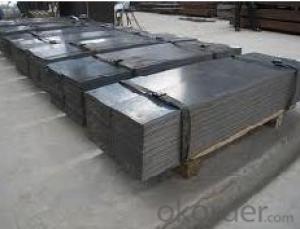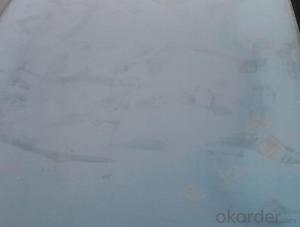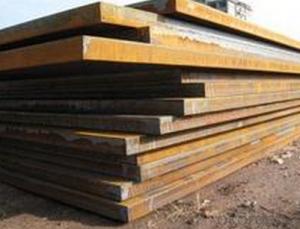Hot Rolled Carbon Steel Plate,Carbon Steel Sheet 1622Mng, CNBM
- Loading Port:
- Qingdao
- Payment Terms:
- TT OR LC
- Min Order Qty:
- 10 pc
- Supply Capability:
- 30 pc/month
OKorder Service Pledge
OKorder Financial Service
You Might Also Like
Quick Details
| Standard: | AISI, ASTM, GB, JIS | Grade: | Q195,Q235,Q345,A36,C45 | Thickness: | 1.0-30MM |
| Model Number: | Q235,Q195,Q345 | ||||
| Type: | Steel Plate | Technique: | Hot Rolled | Surface Treatment: | Coated |
| Application: | Ship Plate | Special Use: | Silicon Steel | Width: | 30-2000mm |
| Length: | as your requirement | standard: | hot rolled | Surface: | Anti-rust oil |
Packaging & Delivery
| Packaging Details: | seaworthy packages or as customers' require |
| Delivery Detail: | within 15 days after the advance payment |
Hot rolled steel plate
1 carbon steel plate 3mm thick General information
| Product name | Type | Specification | Implementation of GB | ||
| thick | wide | long | |||
| Carbon structural steel | Q195,Q215, Q235A,Q235B, Q235C,Q255, Q275 | 4-120 | 1500-4500 | 6000-12000 | GB/T700-2006 |
| Low-alloy structural steel | Q295,Q345A, Q345B,Q2345C | 4-120 | 1500-4500 | 6000-12000 | BG/T1591-1994 |
| Quality carbon structural stee | 30-50 | 4-120 | 1500-4500 | 6000-12000 | BG/T699-1999 |
| Ship steel | CCSA,CCSB | 4-120 | 1500-4500 | 6000-12000 | materials and welding condition |
| CCSAH32,CCSAH36 CCSDH32,CCSDH36 | 4-120 | 1500-4500 | 6000-12000 | materials and welding condition or GB 712-2000 | |
| Boiler steel | 20g,22Mng, 16Mng,19Mng | 4-120 | 1500-4500 | 6000-12000 | GB 713-1997 |
| Pressure vessel steel | 1622Mng,20R, 15MnVR,15MnVNR | 4-120 | 1500-2700 | 6000-12000 | GB 6654-1996 |
| European standard plate
| S235JR,S235J0, S275JR,S275J0, S275JR2,S355JR, S355J0,S355J2 | 4-120 | 1500-4500 | 6000-12000 | EN 10025 |
| Japanese standard plate | SS400,SS400-B | 4-120 | 1500-4500 | 6000-12000 | JIS G3101-2004 |
2 carbon steel plate 3mm thick detail specification
Material:
A283Gr.D/A573Gr.65,A516Gr65,A516Gr70,A284Gr.D
SS400,SS300,CCSB A36,A32,LRA32,LRB,Q235
Q195,Q235,Q345,SS400,ASTM A36,E235B
Thickness: 4mm-120mm
width: 1500mm-4500mm
Length:2-10m ,accordingly
Thickness | 4-120mm |
Width | 1500-4500mm or as custom's request |
Length | 2-12m,as your requirment |
Technique | Cold rolled or hot rolled |
Surface treatment | Bare, galvanized coated or as customer's requirements. |
Standard | ASTM,EN,GB,JIS,GB |
Material | A283Gr.D/A573Gr.65,A516Gr65,A516Gr70,A284Gr.D SS400,SS300,CCSB A36,A32,LRA32,LRB,Q235 Q195,Q235,Q345,SS400,ASTM A36,E235B |
Terms of Payment | L/C or T/T |
Chemical composition | C≤0.004%;Si≤0.030%; Mn ≤0.17%;P≤0.012%; S≤0.010%; Fe balance |
Delivery Detail | within 30days once receive deposite or confirm L/C |
Packing | Standard export packing,or as requirement |
3 carbon steel plate 3mm thick application:
construction,machinery manufacturing, container manufacturing, shipbuilding, bridge construction. Can also be used to manufacture a variety of containers, the furnace shell, furnace plate, bridge and vehicle static steel plate, low alloy steel plate,shipbuilding plate, boiler plate, pressure vessel plate, pattern plate, tractor parts, automobile frame steel plate and welding components
- Q: How do steel sheets compare to galvanized sheets?
- Steel sheets and galvanized sheets are both widely used in various industries and applications, but there are some key differences between the two that make them suitable for different purposes. Steel sheets are made from a low carbon steel that is strong and durable. They can be used in a wide range of applications, including construction, automotive manufacturing, and fabrication. Steel sheets are available in different grades and thicknesses, allowing for versatility in their use. They offer excellent strength and are resistant to corrosion when properly maintained. On the other hand, galvanized sheets are steel sheets that have been coated with a layer of zinc through a process called galvanization. This coating provides a protective barrier against corrosion and extends the lifespan of the sheet. Galvanized sheets are commonly used in outdoor applications where exposure to moisture and harsh weather conditions is a concern, such as roofing, fencing, and outdoor signage. Compared to steel sheets, galvanized sheets have a higher resistance to corrosion and tend to last longer in outdoor environments. However, they may not be as strong as steel sheets and can be more expensive due to the galvanization process. Galvanized sheets also have a characteristic shiny appearance due to the zinc coating, which can give a more aesthetically pleasing finish. In summary, steel sheets are strong, versatile, and suitable for various applications, while galvanized sheets offer superior corrosion resistance and are ideal for outdoor use. The choice between the two ultimately depends on the specific requirements of the project, taking into account factors such as strength, durability, corrosion resistance, and budget.
- Q: Are steel sheets suitable for water tanks?
- Yes, steel sheets are suitable for water tanks. They are commonly used due to their durability, strength, and resistance to corrosion. Steel sheets can be coated or treated to ensure they are safe for storing water and can withstand the pressure and conditions inside a tank.
- Q: Can steel sheets be used for architectural applications?
- Yes, steel sheets can be used for architectural applications. Steel sheets offer several advantages such as strength, durability, and versatility, making them suitable for a wide range of architectural purposes like roofing, cladding, and structural elements. Additionally, steel sheets can be customized in terms of size, shape, and finish, allowing architects to achieve their desired design aesthetics.
- Q: Can the steel sheets be bent or formed into different shapes?
- Yes, steel sheets can be bent or formed into different shapes. Steel is a highly malleable material, which means it can be easily manipulated and shaped without breaking. This allows for a wide range of applications where steel sheets need to be bent or formed into specific shapes, such as in the construction industry for manufacturing beams, columns, and other structural components. Various methods, such as cold forming, hot forming, and press braking, can be used to bend or form steel sheets into different shapes, depending on the desired end result and the thickness of the steel.
- Q: Are the steel sheets suitable for automotive applications?
- Yes, steel sheets are commonly used in automotive applications due to their high strength, durability, and formability. They provide structural support, enhance crash safety, and can be easily shaped into various automotive components, making them suitable for the automotive industry.
- Q: Can the steel sheets be used for kitchen countertops?
- Yes, steel sheets can be used for kitchen countertops.
- Q: Can steel sheets be used in medical applications?
- Yes, steel sheets can be used in medical applications. They are commonly used in the manufacturing of medical instruments, surgical equipment, and medical furniture due to their strength, durability, and corrosion resistance properties.
- Q: Can steel sheets be used for interior wall cladding?
- Yes, steel sheets can be used for interior wall cladding. They can provide a modern and industrial aesthetic, are durable, and can be easily cleaned. However, it is important to consider proper insulation and fireproofing measures when using steel sheets for interior applications.
- Q: What do you pay attention to?
- 1, the plastic bumper with 150-320# sandpaper, if the upwarping phenomenon in the injured, also with a knife will become warped skin scraping.2, in addition to oil, dust, after the proportion of the mixture of good ash fill the depression, to dry solid, first with 320-400# sandpaper polished, and then use 600-800# sandpaper grinding.3. After drying, place a primer newspaper at about 40mm of the ash.4, after removing oil and dust, with diluted primer (primer and quick drying diluent ratio of 1:1), empty spray again, dry and then spray again. In order to reduce the number of spraying and grinding time, it is necessary to ensure the smooth flow of primer, without flashing between each time. Dry the surface of the paint film, until the primer lose brightness, you can continue spraying, and then go round and round until you reach the thickness of the depression.5, in order to shorten the volatilization time, can use high temperature equipment baking, do not have to remove the newspaper, dry solid with 600-800# sandpaper to throw flat, but must not wear primer layer leakage.
- Q: What is the difference between a smooth and patterned steel sheet?
- A plain and uniform surface characterizes a smooth steel sheet, devoid of any visible patterns or textures. It boasts a consistent and sleek appearance, rendering it ideal for situations that call for a clean and contemporary look. In contrast, a patterned steel sheet showcases a myriad of designs or textures that are either embossed or etched onto its surface. These patterns can range from simple geometric shapes to intricate motifs. People often opt for patterned steel sheets due to their decorative appeal, as they have the ability to enhance the visual interest of a space. They are commonly employed in architectural elements, such as wall panels or ceiling tiles, to create a distinct and artistic effect. When it comes to functionality, smooth steel sheets might offer slightly superior corrosion resistance due to their smoother surface. This makes them well-suited for applications that require protection against rust, such as in outdoor or marine environments. On the other hand, patterned steel sheets may exhibit reduced corrosion resistance due to the variation in surface texture, potentially providing less safeguarding against rust. In conclusion, the decision between a smooth and patterned steel sheet hinges on the desired aesthetic, functional requirements, and the intended application.
Send your message to us
Hot Rolled Carbon Steel Plate,Carbon Steel Sheet 1622Mng, CNBM
- Loading Port:
- Qingdao
- Payment Terms:
- TT OR LC
- Min Order Qty:
- 10 pc
- Supply Capability:
- 30 pc/month
OKorder Service Pledge
OKorder Financial Service
Similar products
Hot products
Hot Searches
Related keywords
